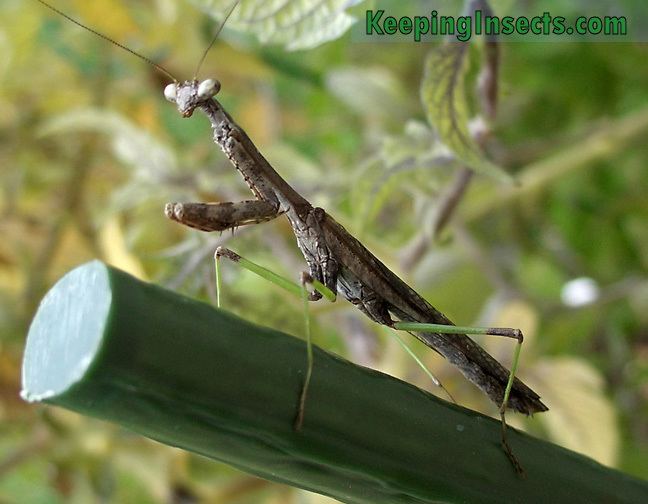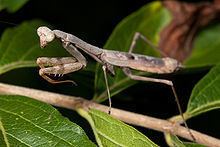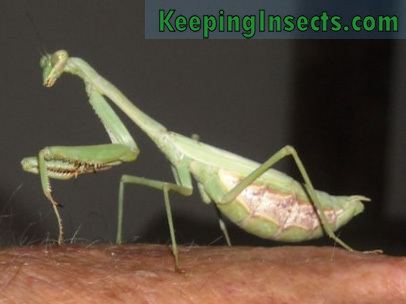Higher classification Stagmomantis Order Mantis | Genus Stagmomantis Rank Species | |
 | ||
Similar Stagmomantis, Mantis, Insect, Chinese mantis, Mantidae | ||
A brown marmorated stink bug after male carolina mantis attack
The Carolina mantis (Stagmomantis carolina) is a species of praying mantis of the subfamily Stagmomantinae.
Contents
- A brown marmorated stink bug after male carolina mantis attack
- Carolina mantis feeding
- Range
- Description
- Synonyms
- References
Sexual cannibalism occurs in roughly one quarter of all intersexual encounters of this species, though specimens of this species will engage in cannibalism regardless of age or gender if the opportunity presents itself.

Carolina mantis oothecae can be purchased in garden supply centers as a means of biological control of pest insects. It is the state insect of South Carolina.

Carolina mantis feeding
Range

Stagmomantis carolina is native to South America, Central America and North America. Southern United States, Central-Southeastern USA, Buenos Aires Mexico, Panama, Trinidad, Venezuela, Suriname Belize, Costa Rica, Nicaragua, French Guyana, and Guatemala.
Description
Adult females are 47 to 60 millimeters in length while adult males are usually about 54 millimeters in length. 1st instar nymphs are 7-12 millimeters in length. When the nymphs eat more their abdomens get much longer. The Carolina mantis has a dusty brown, gray, or green color useful as camouflage in certain environments. The Carolina mantis' color varies because the nymphs are able to adjust their color to match the environment they are in at the time of molting. They can adjust their color over each molt, if necessary, until they reach their final molt to adulthood. An unusual trait is that its wings only extend three quarters of the way down the abdomen in mature females; this trait is also seen in Iris oratoria, which can be distinguished by the large eyespots on the hind wings (inner-wings) of both adult male and female Iris oratoria. Both adult male and female Stagmomantis carolina have a dark coloured dot on each of their forewings (outer-wings) which may be partially hidden in a brown or dark colour morph individual.
Synonyms
The species was first described in Centuria Insectorum (1763) as Gryllus carolina.
